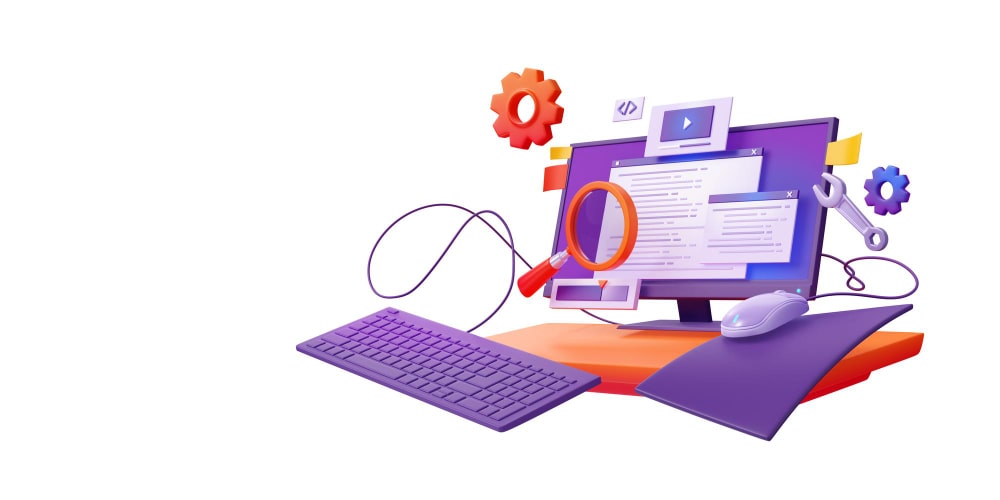In today’s digital age, Software as a Service (SaaS) has become a ubiquitous term, revolutionizing the way businesses operate and users interact with technology. From streamlining processes to enhancing accessibility, SaaS offers a plethora of benefits for both providers and consumers. In this comprehensive guide, we delve into every aspect of SaaS, covering its definition, cost considerations, development process, and its far-reaching impact.
What is SaaS?
SaaS, short for Software as a Service, refers to a cloud-based software distribution model where applications are hosted by a third-party provider and made accessible to users over the internet. Unlike traditional software installation, where users have to purchase and install the software on individual devices, SaaS allows users to access the application via a web browser, paying on a subscription basis.
Understanding the Cost of SaaS
Subscription Fees:
SaaS operates on a subscription-based model, where users pay a recurring fee for access to the software. These fees can vary depending on factors such as the number of users, features included, and the chosen subscription plan (e.g., monthly or annual).
Implementation Costs:
While SaaS typically eliminates the need for upfront software licensing fees, there may still be implementation costs involved. This includes data migration, customization, and integration with existing systems, which can vary depending on the complexity of the deployment.
Scalability:
One of the advantages of SaaS is its scalability, allowing businesses to adjust their subscription plans based on their changing needs. As the user base or feature requirements grow, the subscription costs can scale accordingly.
Operational Expenses:
SaaS also reduces operational expenses associated with maintaining on-premises infrastructure, such as hardware maintenance, software updates, and IT support. These savings contribute to the overall cost-effectiveness of SaaS solutions.
The Development Process
Conceptualization:
The development process begins with identifying the target audience, defining the core features, and outlining the functionality of the SaaS application.
Prototyping:
Prototyping involves creating a visual representation of the software interface and user experience. This allows stakeholders to provide feedback and iterate on the design before development begins.
Development:
Development entails writing code, building the infrastructure, and integrating various components to create the SaaS application. Agile methodologies are often employed to facilitate iterative development and continuous improvement.
Testing and Quality Assurance:
Rigorous testing is conducted to identify and address any bugs or issues within the software. This includes functional testing, performance testing, and security testing to ensure the reliability and robustness of the SaaS application.
Deployment and Maintenance:
Once the SaaS application is deemed ready for release, it is deployed to the production environment. Ongoing maintenance and support are essential to address any issues, implement updates, and ensure optimal performance.
Beyond Development: The Impact of SaaS
Accessibility:
SaaS applications can be accessed from any device with an internet connection, enabling users to work remotely and collaborate in real-time.
Scalability:
SaaS offers scalability, allowing businesses to easily scale up or down based on fluctuating demand without the need for significant infrastructure investments.
Cost-Effectiveness:
With SaaS, businesses can avoid upfront capital expenditures and instead pay for software on a subscription basis, reducing financial risk and improving cash flow.
Innovation:
SaaS providers continuously innovate and update their software to meet evolving user needs and stay ahead of the competition. This ensures that users have access to the latest features and improvements without the hassle of manual updates.
Global Reach:
SaaS applications can be accessed globally, breaking down geographical barriers and enabling businesses to reach new markets and customers.
Addressing Security Concerns
Data Protection:
Security is a paramount concern for SaaS providers and users alike. SaaS providers implement robust security measures to protect sensitive data, including encryption, access controls, and regular security audits. Users can also benefit from centralized data storage and backup mechanisms provided by SaaS solutions, enhancing data protection and disaster recovery capabilities.
Compliance:
SaaS providers adhere to industry-specific regulations and compliance standards to ensure the confidentiality, integrity, and availability of customer data. This includes compliance with regulations such as GDPR (General Data Protection Regulation), HIPAA (Health Insurance Portability and Accountability Act), and SOC 2 (Service Organization Control 2) for data security and privacy.
Integration and Customization
APIs and Integrations:
SaaS applications often provide APIs (Application Programming Interfaces) that allow seamless integration with other software systems and third-party services. This enables businesses to extend the functionality of their SaaS applications and streamline workflows by connecting with existing tools and platforms.
Customization:
While SaaS solutions offer standard features and configurations, they also provide customization options to meet specific business requirements. Customization may include branding, user interface modifications, and the development of bespoke features tailored to the unique needs of individual businesses.
User Experience and Support
User-Centric Design:
SaaS providers prioritize user experience design to ensure that their applications are intuitive, user-friendly, and accessible across devices. This focus on usability enhances user adoption and satisfaction, driving productivity and reducing training overhead for businesses.
Customer Support:
SaaS providers offer comprehensive customer support services, including technical assistance, troubleshooting, and user training. Support channels may include online documentation, knowledge bases, email support, and live chat, ensuring prompt resolution of user inquiries and issues.
Continuous Improvement and Innovation
Feedback Mechanisms:
SaaS providers actively solicit feedback from users to identify areas for improvement and prioritize feature enhancements. User feedback channels, such as surveys, feedback forms, and user forums, enable SaaS providers to gather insights and iteratively enhance their products to better meet user needs.
Agile Development Practices:
SaaS development teams embrace agile methodologies, allowing for rapid iteration and continuous improvement of the software. Agile practices, such as Scrum and Kanban, promote collaboration, flexibility, and responsiveness to changing requirements, driving innovation and agility in SaaS development.
Conclusion
In summary, Software as a Service (SaaS) encompasses not only the delivery of software over the Internet but also a comprehensive ecosystem of security, integration, customization, user experience, and innovation. By addressing security concerns, facilitating integration and customization, prioritizing user experience and support, and embracing continuous improvement and innovation, SaaS providers empower businesses to leverage technology more effectively and achieve their goals in an ever-evolving digital landscape. As SaaS continues to evolve and expand its reach, it remains a driving force behind digital transformation and business innovation across industries.









